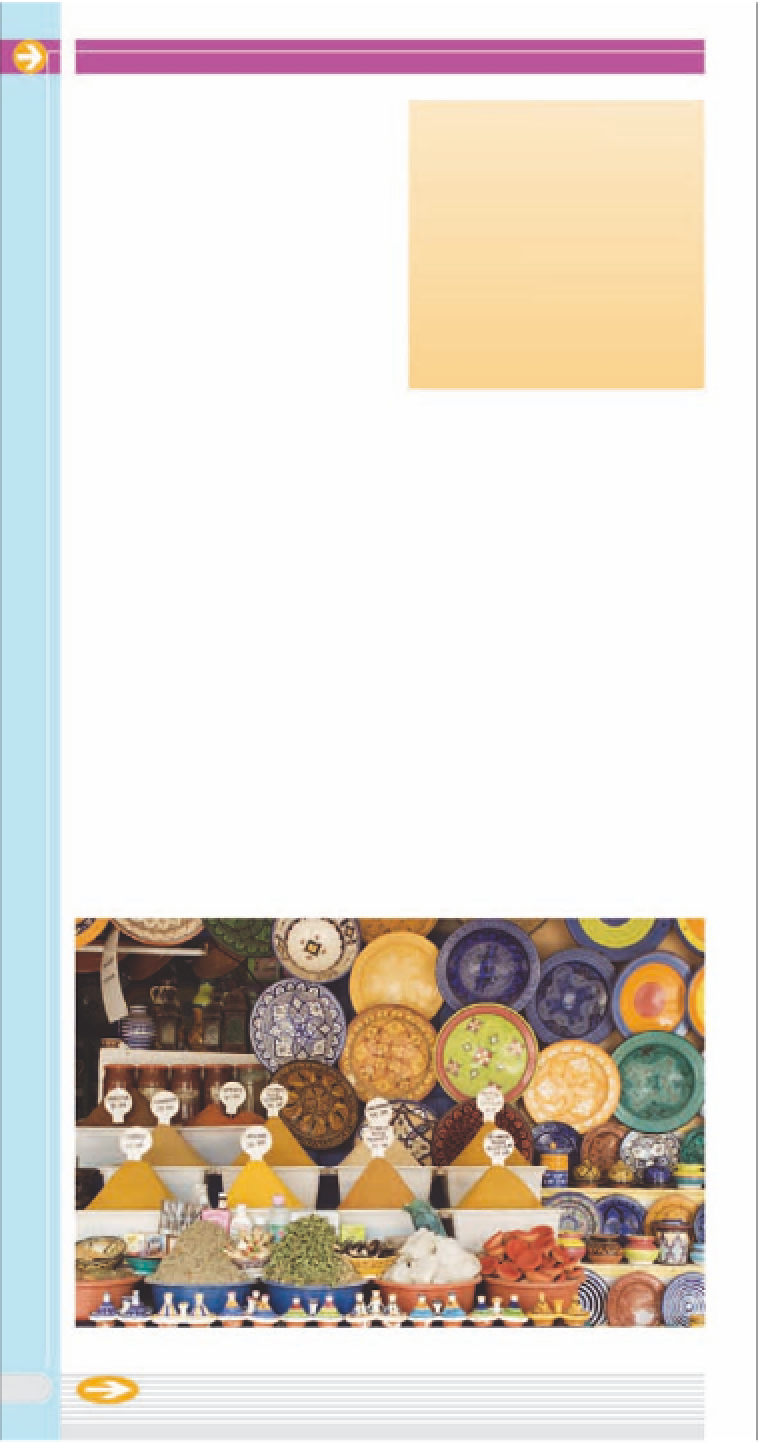Travel Reference
In-Depth Information
%
The mellah
Music city
A popular hippy stopover in the
late 1960s, Jimi Hendrix famously
passed through, as did Frank
Zappa. Cat Stevens, now Yusuf
Islam, still returns each summer.
The hippy influence lingers on
here: the annual Gnawa Festival
d'Essaouira
(see p44)
attracts
musicians from around the globe
and has been described as the
world's biggest jam session.
During the 18th and 19th
centuries, a Jewish community
gained prominence in Essaouira,
becoming the most important
economic group. They have all
long since left and the town's
Jewish quarter is in a dilapidated
state. You can reach the mellah
by following the alleys just inside
the ramparts beyond Skala de la
Ville. You can still identify the
former Jewish residences,
fronted as they are by balconies.
In some cases, the Hebrew
inscriptions on their lintels are
also visible.
d
Map Q1
^
The souks
Place Orson Welles, in honour of
the great filmmaker who came
to Essaouira in 1949 to shoot his
version of
Othello
. Since then,
Essaouira and the surrounding
area have been used as movie
locations in many international
film projects, the most recent
ones being Oliver Stone's epic
Alexander the Great
and Ridley
Scott's
Kingdom of Heaven
.
d
Map N2-P2
At the heart of the medina is
a lively market, the Souk Jdid,
divided into four quarters by the
intersection of two main thoro-
ughfares. There is a daily souk
for fish, spice and grains and a
cloistered square, known as the
Joutia, where secondhand items
are auctioned.
d
Map P1
&
Place Orson Welles
*
The beaches
Essaouira's beach, to the
south of the medina, is one of
the finest in Morocco. However,
the strong winds that batter this
part of the Atlantic coast
frequently make it a little too
Between the medina walls
and the beach, a small park-like
square goes by the name of
The Spice Souk
82


































